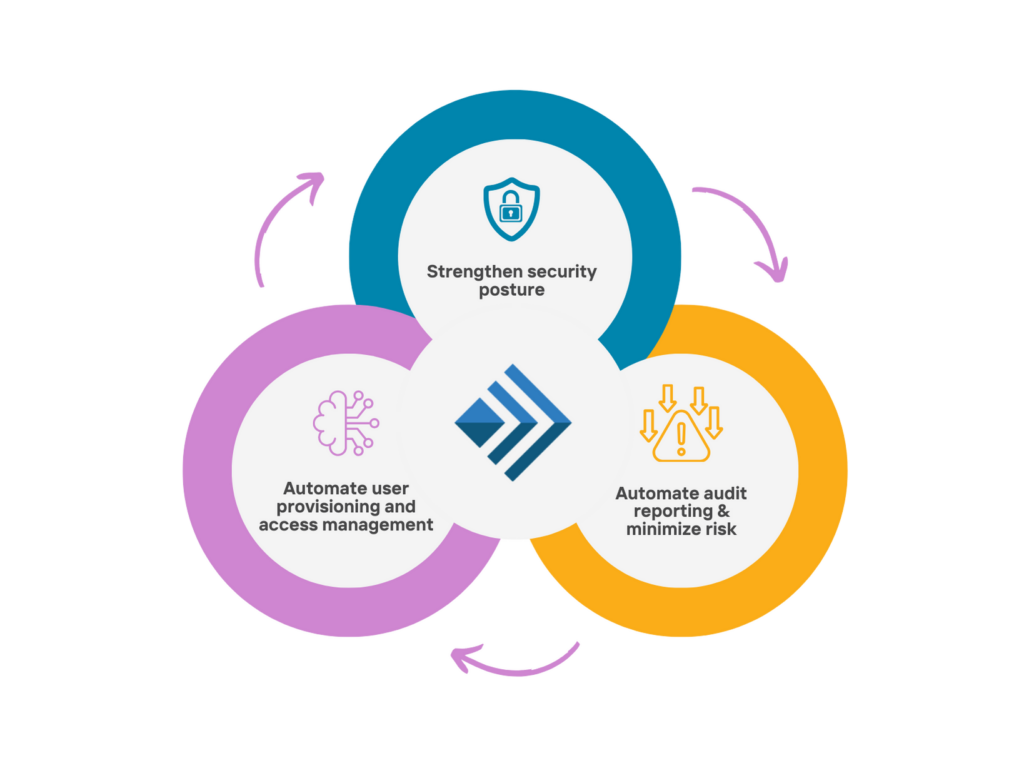
We know that Identity and Access Management implementations are not simple. It is a mammoth task to take all the data, human and non-human identities, infrastructure, platforms, and applications into consideration. From there, you must align them and measure their effectiveness while ensuring that the user experience remains uncompromised. Organizations often find it challenging to pave out the IAM journey when focusing on the core business is the priority.
However, this becomes less complicated when Security & Risk professionals set up a roadmap towards the IAM program journey and a set of parameters to measure the effectiveness of the strategies.
Assess the need and expected outcome.
Assessing the need for IAM requires aligning it with your organization’s security and business goals. Is customer satisfaction your goal? Is ensuring that the customers interacting with your organization through different touchpoints have a smooth and secure experience? Are you aiming to ensure the workforce has seamless onboarding with minimum onboarding time with no compliances? Do you want to make it more efficient for the vendors or partners to interact and work with you? Are all these user groups equipped to interact, communicate and complete every digital transaction securely without you or them feeling compromised?
These are just some reasons why some organizations develop an IAM program. So, define your need clearly. 53% of information workers store their passwords insecurely. Thus, workforce identity security is a crucial area that could jeopardize the entire security process for an organization and could even lead to a cyberattack.
Develop the business case, strategy, architecture and clear roadmap.
Once the need is established, the buy-in process from leadership begins. This requires developing a solid business case and goals with a clear strategy, architecture and roadmap. Just as developing a risk management strategy is a priority for an organization, so is an IAM strategy, providing the manifest for the program establishment. When an IAM plan is presented with a needs assessment, strategy, solution design, and implementation with budget planning, leadership buy-in is highly achievable. Additionally, the ever-changing technology landscape, consumer behavior, workforce structure, and many other dynamics, requires an architecture that is built keeping these considerations in mind. So, decisions like if the in-house team can implement the program or if it needs to be outsourced to an IAM service provider need to be decided during this stage. Managing identities in environments where change is constant is a colossal initiative, and without great architecture, the most robust strategy will take a nosedive.
Engage business stakeholders.
While it may be the most challenging endeavor in the IAM roadmap, the business stakeholder’s engagement is an absolute success factor of the program. Involving key stakeholders who would form a large part of the user groups – business users, partners, contractors, and customers – is an integral part of this journey. Maneuvering the IAM roadmap is next to impossible without their input and engagement. Their involvement and experience helps to set reasonable expectations, assess risks and determine success factors. When business stakeholders are engaged right from the inception of the IAM program, the scope of failure in the road ahead is diminished considerably.
Consider the modern security landscape.
Today, non-human identities form an essential part of digital infrastructure. The areas that are increasingly witnessing engagement of non-human identities include devices, IT administration, software-defined infrastructure and AI technologies. Thus, the IAM plan should consider the security landscape as well. In the case of an environment where there is an increasing engagement of non-human identities, for example, the IAM implementation plan should consider the possible threats and mitigation tactics. Non-human devices in the environment are often an oversight, even though it is a risky insider threat.
A GSMA study predicts that for smart manufacturing alone, IoT connections will grow at a rate of over 30% yearly between 2018-2023. With that growth rate of devices, imagine the complexities when those connections are onboarded without an inadequate strategy or tools. Staying on top of technical advancements and aligning security tools is an investment worth your while.
Ensure a great security culture backed with transparency and open communication.
Organizational culture is not separate from strategy – it is the strategy. A successful IAM program is dependent on an open, transparent culture. You can’t identify the gaps within a system unless the goal is shared between teams and a culture of mutual trust and communication is nurtured. Petty politics, lack of transparency and trust in each other are often obstacles for any organizational transformation. IAM strategy and program implementation and its adoption are no different. Initiatives like security awareness, which forms the core of an overall security culture, often get neglected between running a business and managing people. In a SANS report, about 80% of security awareness professionals said they spend only half or less of their time on awareness – a clear indication that as a culture, security awareness is only a part-time effort. Setting a culture of security is a foundation to a sustained IAM program and it is THE strategy.
Set goals and success parameters.
Setting goals and measuring effectiveness is key to decision making, not only for the C-Suite, but for all stakeholders. Poor results may be due to the lack of identifying and implementing performance measurements. IAM deployment outcomes should be assessed by assigning KPIs to determine success and failure in alignment with the use case in mind. In case you’re wondering how to assess the deployment, check out: How to Measure the Success of IAM Deployment.
Assess outcomes if they align with business goals.
Let’s go back to steps 1 and 2. The expected outcomes derived from the program should align with the original purpose of the IAM program. Between driving revenue, growing the business, and managing people, IAM programs are often not the top priority. This is a widespread problem for most organizations. Matching the metrics with expected business goals may be a battle and feel overwhelming. But preparing and planning could help. Key findings, along with mapping the technology transformation and prioritizing the immediate initiatives are just some of the deliverables from the assessment. These will be crucial for the business to provide the current IAM maturity and scope for future improvements.
Increasing cloud adoption, connected devices, user experience, productivity, changing work environments (hybrid and remote), governance and compliance are key drivers of an IAM program in an organization. It is estimated that 70% of global business executives made IAM a priority and planned to increase spending in IAM for their workforce between 2021-2022. Likewise, customer trust and privacy in a digital environment have become a priority for organizations. A concrete IAM roadmap with ever-evolving advancements is an investment that cannot be ignored. A robust IAM program roadmap can be a threshold for successful implementation and supports leadership buy-in significantly.
